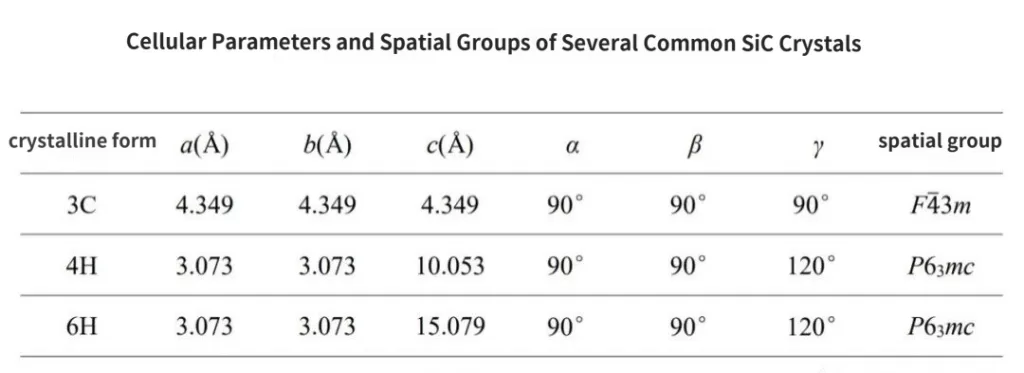Science Popularization | Understanding SiC Structure in One Article
Recently, a certain brand’s car launch event has attracted widespread attention, with the technical hotspot of SiC electronic control modules once again under discussion. The core material in this section is SiC, and this article will provide a detailed analysis of the SiC structure.
SiC is a compound composed of two elements, similar to the salt we usually eat, NaCl, and the water we drink, H2O, both of which are compounds.
The earliest method of synthesizing SiC artificially was 140 years ago when an American chemist, Acheson, synthesized SiC by heating coke and silica in a furnace.
Coke is familiar to everyone, commonly used in barbecue skewers for roasting meat, while silica is the sand dug out of sandpits. By treating sand like skewered meat and subjecting it to high temperatures along with coke until both sand and coke melt, then cooling them into a solid, SiC crystals are formed.

SiC is a binary compound formed by Si and C elements in a 1:1 ratio. Both Si and C belong to the IV group of elements, with four electrons in their outer shell.
Due to the difference in diameter between these two atoms, Si atoms have a larger diameter, while C atoms have a smaller diameter, similar to apples and oranges. When an equal number of oranges and apples are stacked together, it forms the SiC crystal, with the combination of these two atoms occurring in a tetrahedral form.
What is a tetrahedron?
It’s the shape of a pyramid, like the one below.
When combining SiC, at the smallest unit level, it can be seen as a tetrahedron composed of C and Si, with one Si surrounded by four C atoms, or alternatively, one C surrounded by four Si atoms.
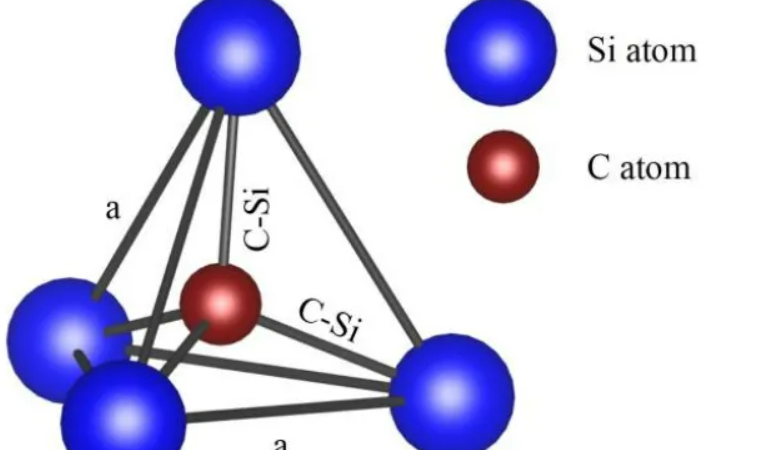

The crystal structure of SiC can also be described using a layered structure method, as shown in the diagram. Several C atoms in the crystal occupy hexagonal lattice points in the same plane, forming a closely packed layer of C atoms. Similarly, Si atoms also occupy hexagonal lattice points in the same plane, forming a closely packed layer of Si atoms.
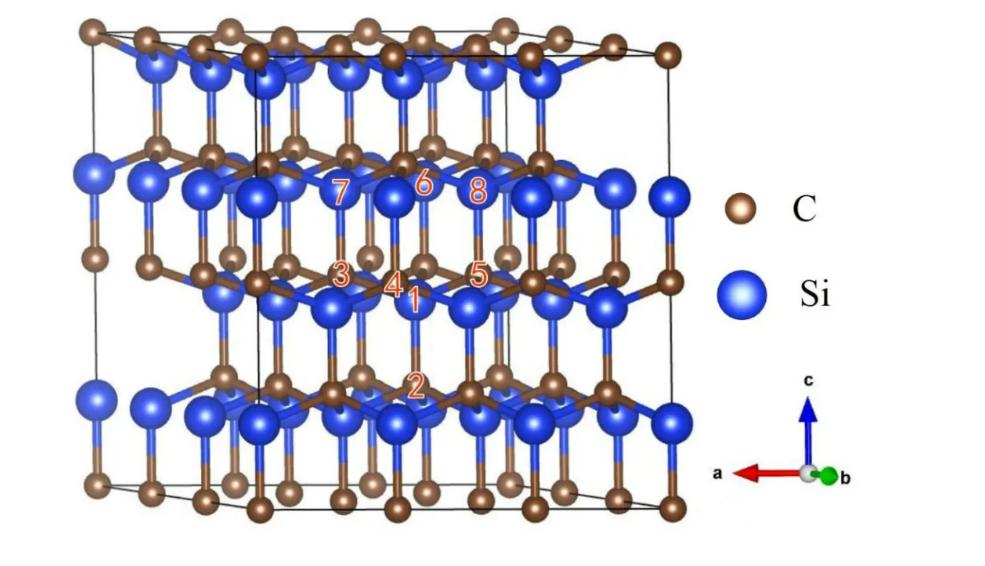
This combination of “silicon tetrahedra” is very robust and possesses unique physical and chemical properties.
For instance, it has a high thermal conductivity and excellent heat dissipation. While other materials may get scorched under high temperatures, SiC behaves differently. It actively dissipates heat when subjected to baking, resembling the function of an electric fan. This ability to withstand high temperatures makes it widely used in high-power devices.
Moreover, the robustness of this “silicon tetrahedra” contributes to its strong impact resistance and high breakdown field. Hence, it is the preferred material for power devices and high-frequency devices, laying the foundation for its subsequent use in IGBT power devices.
However, SiC material is not composed of a single tetrahedron of C and Si atoms but rather by numerous Si and C atoms. From a broader perspective, C and Si form a network. It’s worth noting that this network is not just an ordinary flat plane but a surface with certain undulations. On one layer, there are C atoms, while on the next layer, there are Si atoms. This network, composed of C and Si atoms, is termed a bilayer.

Even with a layer of C-Si bilayer, it’s insufficient to form a crystal. If we liken the SiC crystal to a block of tofu, the C-Si bilayer is akin to a thousand tofu sheets. Thousands of these tofu sheets must be stacked to form the shape of tofu.
The difference in crystal structure primarily arises from the periodic variations in the arrangement of Si-C bilayers. The arrangement order of Si-C bilayers can vary in countless ways, with over 200 known types of arrangements.
However, in practical applications, we don’t require exotic arrangements because the more complex the arrangement of Si-C bilayers, the less controlled the optoelectronic properties become. Moreover, growing such complex crystals is challenging, and their repeatability is poor. Therefore, the most common crystal structures in the industry are the following three:
(1) The first one is called: 3C-SiC.
Here, ‘3’ represents the number of bilayer repeat units, similar to constructing a building with three layers as a fixed unit and repeating the construction upward. ‘C’ stands for cubic, indicating that the atoms in this crystal are arranged in a cubic structure. This type of carbon-silicon bilayer repeats in an ABC-ABC sequence.

What is a cubic crystal system?
The atomic arrangement is as follows: a cube with an atom at the center of each face. This type of atomic arrangement is also known as a face-centered cubic crystal system.
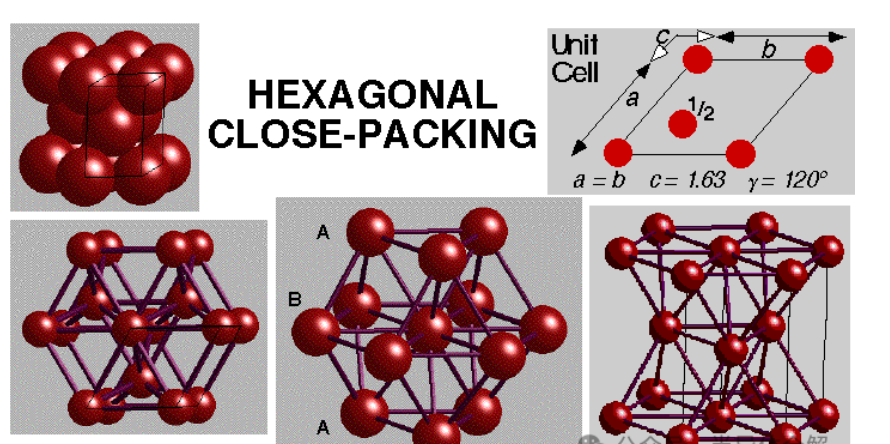
The third type is called: 6H-SiC
Like the previous ones, 6 stands for the number of double atomic layers repeated, and H represents closely packed hexagonal. This carbon-silicon double atomic layer is arranged in a repeating sequence of ABCACB-ABCACB.
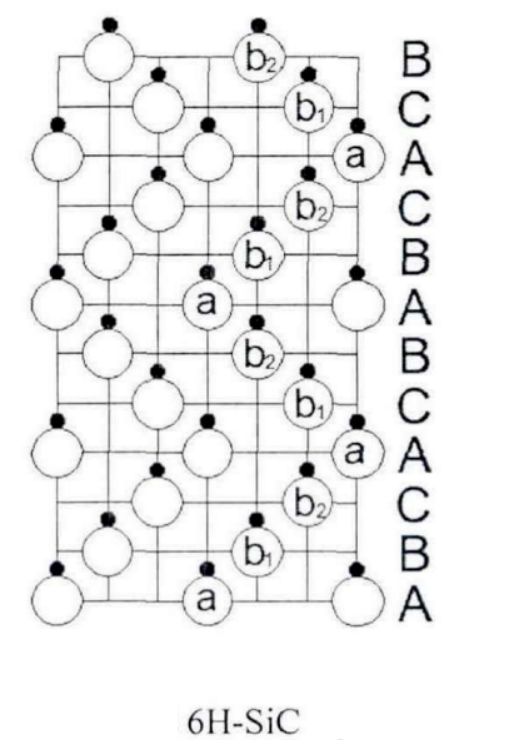
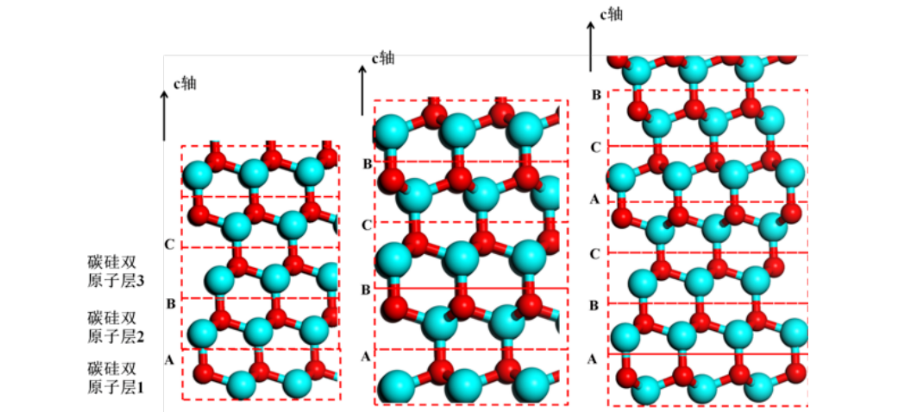
The crystalline structure of SiC is strongly correlated with temperature. Under high temperatures ranging from 1900 to 2000°C, 3C-SiC, due to its inherent structural instability, slowly transforms into polytypes such as 6H-SiC. Because the probability of polytype formation in SiC is highly dependent on temperature and the instability of 3C-SiC itself, achieving a high growth rate for 3C-SiC is challenging, leading to difficulties in its preparation. On the other hand, hexagonal crystal structures such as 4H-SiC and 6H-SiC are more commonly studied and easier to prepare due to their inherent characteristics.
